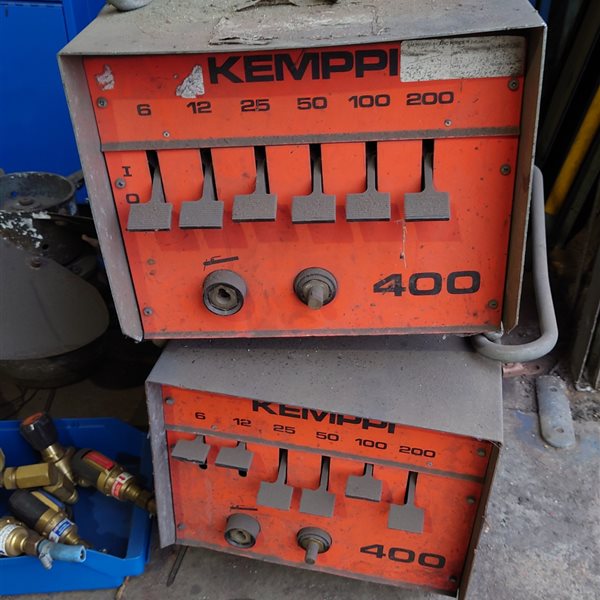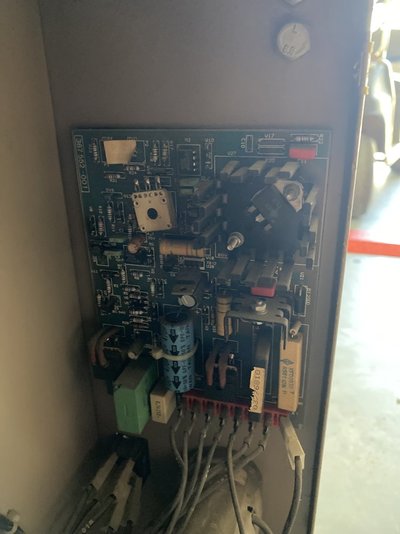When you measured the DC voltage at the torch tip with respect to the work clamp ( 17.5v to 33v ), I guess the torch polarity was already shown on your voltmeter as positive.... Unless someone had specifically modified the machine for fluxcore, I think it was and is normal polarity.
Any careless attempt to do the swap risks the capacitors going "pop" big-time! They are polarised, and so torch polarity must be changed after the capacitors, not at the rectifier.
I suppose the capacitors are 8,000 uF each ( not 80,000 ). Gently charging a cap with a few volts and checking if it holds that voltage for a while is a pretty good test. However, use a low-current source ( 9-volt PP3 battery, or 4 x 1.5v AA cells in series ), rather than the infinite Amps from a 12v car battery!
Returning to my suggestion in Post #6 that voltage is getting lost due to a high-resistance joint in the high-current secondary path: if you measure the torch tip voltage under load and then compare that with the open-circuit voltage, you may see a drop, and can then go backwards down the circuit path to see if it is being lost at a specific point. The problem is doing this whilst welding is not easy, you need a steady load. A few 60W car headlamp bulbs ( in series ) can be used, but that is only a 5-Amp load. For a higher current load, if you have not got one of these:

 www.westermans.com
you can Google "hillbilly load bank" for an alternative.
www.westermans.com
you can Google "hillbilly load bank" for an alternative.
Any careless attempt to do the swap risks the capacitors going "pop" big-time! They are polarised, and so torch polarity must be changed after the capacitors, not at the rectifier.
I suppose the capacitors are 8,000 uF each ( not 80,000 ). Gently charging a cap with a few volts and checking if it holds that voltage for a while is a pretty good test. However, use a low-current source ( 9-volt PP3 battery, or 4 x 1.5v AA cells in series ), rather than the infinite Amps from a 12v car battery!
Returning to my suggestion in Post #6 that voltage is getting lost due to a high-resistance joint in the high-current secondary path: if you measure the torch tip voltage under load and then compare that with the open-circuit voltage, you may see a drop, and can then go backwards down the circuit path to see if it is being lost at a specific point. The problem is doing this whilst welding is not easy, you need a steady load. A few 60W car headlamp bulbs ( in series ) can be used, but that is only a 5-Amp load. For a higher current load, if you have not got one of these:

Kemppi 400 amp Load Bank
For Sale - Used Kemppi 400 amp Load Bank . Available Today | Worldwide Delivery


